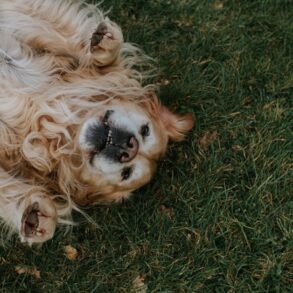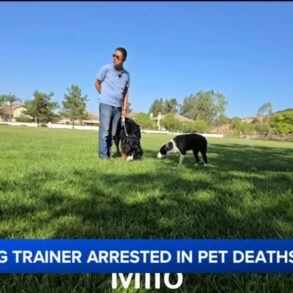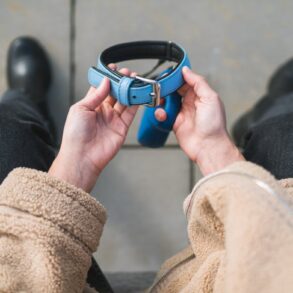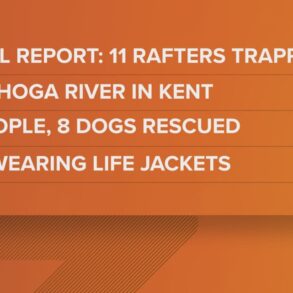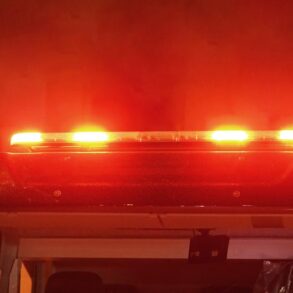West Virginia’s secretary for arts, culture and history said again that an image of the governor’s high-profile dog was a last-second addition to a taxpayer-funded mural at the state’s most prominent public building.
“I’m tickled to death,” Gov. Jim Justice responded to the explanation by Arts Secretary Randall Reid-Smith. “Randall, I think you did good.”
Part of the governor’s weekly news briefing was spent justifying the English bulldog’s image on a long-delayed mural project in the state Capitol Rotunda. The governor announced on April 3 that eight new murals would be finally be readied for display. The concept, as explained by the Justice administration, was to continue the vision of famed Capitol architect Cass Gilbert. The dog’s likeness was not apparent when draft versions were first made public.
Now questions persist not just about whether the bulldog is historic, cultural or a worthy subject of art, but about whether officials followed a lawful decision-making process to get her there.

Reid-Smith cited meetings more than a decade ago of the Capitol Building Commission — the appointed board that reviews and approves or rejects all plans for substantial physical changes to the grounds and buildings of the State Capitol complex. He said that board’s actions gave the go-ahead for the mural project, with consideration beginning in 2009 and approval on April 14, 2010.
He said the governor finally “gave us the money to pay for these murals that had not been done for 92 years.”
More recently, the secretary said, a different and informal group of executive branch representatives reviewed the specific mural scenes: himself, state Museums Director Charles Morris, Administration Secretary Mark Scott, senior adviser Ann Urling and Rebecca Blaine, director of intergovernmental affairs.
“All five of us said ‘Babydog,’” Reid-Smith recalled.
There is no indication that group had meetings open to the public.
West Virginia contracted with John Canning Company to perform the mural work. Four more murals are still to be completed by November. State records show payments this year to John Canning Company so far amount to $348,098 through the state Division of Culture and History for building improvements.
Capitol Building Commission
Members of the Capitol Building Commission of the era cited by the arts secretary have said this week have cast doubt over whether their actions were as definitive as Reid-Smith has described.
Asked whether members of the commission at that time would have envisioned the 2024 inclusion of the governor’s dog, Rob Ferguson, who was administration secretary and a member of that board, was incredulous: “I do not think something that specific (odd) would have been discussed.”

As director of the state courts system at the time, Steve Canterbury was on the commission as a non-voting member. He believed in the work and said “the reason you’ve got a Capitol Building Commission is then you don’t end up with one strong political figure ending up with the power in their fingers forever.”
Canterbury isn’t buying the logic of displaying the bulldog in a Seneca Rocks scene that also includes dancers, musicians and artisans: “Domestic pets are not considered wildlife.”
He recalled being pleased that the administration at the time was moving toward realization of the mural project. And Canterbury recalled making the motion to get going on early stages “and in starting the process we would involve a committee appointed of professionals – art historians, architects, you know, people who did not work for the governor.”
Canterbury said the full process would have included comments by citizens and a final rendering that would be brought before the commission for approval. “That never happened.” The governor at the time, Joe Manchin, ended his term early and transitioned to being a U.S. Senator. The next governor, Earl Ray Tomblin, faced economic challenges.
The murals have finally come to fruition, but in Canterbury’s estimation the result is far afield from anything in keeping with the design and concepts involved in the creation of the Capitol.
Now, Canterbury said, “the legal issue here is simple – they violated the law by not going through the clearly articulated demands of the code regarding the Capitol building commission, and they did not follow the motion I made in any way shape form or fashion.
“That’s not even close to anything we suggested. You cannot have people who work for the governor do anything except toadie to the governor. I’m sure each of these people is a fine outstanding person, but I know inevitably one’s instinct is to satisfy the boss.”

If there’s a case to be made, Charleston lawyer Harvey Peyton said he would be glad to take it.
“I took a look at the regulations relative to the Capitol Building Commission, and I believe that the ad hoc inclusion of a non-historical, semi-political and non-contextual figure probably violates the requirement that the building commission approve all permanent changes that affect the aesthetics of the building,” said Peyton, who is both an attorney and art enthusiast.
He called the mural an abomination.
“The question becomes, who has standing to challenge this? Certainly a member of the building commission could do so but Randall Reid-Smith is the chairman. The only way to find out for sure whether a individual citizen has the right to challenge would be to bring an action, first for declaratory judgment relative to the authority of the building commission and second for some summary injunctive relief seeking removal,” Peyton said.
“I have always had a keen interest in the visual arts. If I can find a client who would be willing to pay the filing fee, I would certainly be willing to file a lawsuit and think about it somewhere, sometime, the people of West Virginia just have to say enough is enough.”
Justice: ‘It’s kind of a neat thing’

That client won’t be Governor Justice, who emphasized this week that he loves both the mural and his dog.
“Babydog has brought a lot of happiness, a lot, a lot, a lot of happiness all across the state — and I love it in every way that’s she’s brought that level of happiness. And really and truly, and I wasn’t a party to putting Babydog in the mural. I think really what they were trying to do was they wanted to put a dog in. Well, they had to pick some kind of dog. Well, they picked an English bulldog. A long, long time ago before we ever really became a country, the English were in charge; seemed kind of fitting,” Justice said.
The governor concluded, “I mean, come on. Do we not have other stuff that’s a little bit more important to be doing? And here’s something, just to call it like it is, she’s brought a lot of joy. There will be a lot of people that’ll come in the Capitol looking at the murals and everything, looking at her. It’s kind of a neat thing. I love it. I love it teatotally to death. So just be happy. I mean, for crying out loud. Do we not have enough to worry about?”
‘It’s time to move on’
‘A sweet, kind and light-hearted gesture’

Prominent lawmakers generally have not weighed in on the dog on the wall. Some have nodded approval.
House Majority Leader Eric Householder, R-Berkeley, said on MetroNews’ “Talkline” this week that he likes the mural but conceded a different breed of dog could have been represented.
“It could have easily been any dog,” Householder said, suggesting a foxhound or a terrier. “But I’m fine with it. It’s just a dog. It’s time to move on.”

Senator Jack David Woodrum, chairman of the Government Organization Committee, said he had seen the bulldog in the mural prior to its unveiling. He described the contributions of English bulldogs contributing to cattle roundups in early American life thanks to their strong build and tenacious nature. “So I believe that if we were going to include a canine in the mural it would not be inappropriate for the English bulldog breed to have been considered,” said Woodrum, R-Summers.
He concluded, “If the bulldog depicted in the mural was a nod to the governor’s English bulldog named ‘Babydog’ then it is a sweet, kind, and light-hearted gesture given the governor’s description of his dog at many of his public events.
“Babydog is described as loving everybody regardless of their political affiliation, race, or national origin. As I recall the governor goes on to say how we would all be better served to see the world as Babydog does and as he believes most West Virginians do.”

This post was originally published on this site be sure to check out more of their content.





